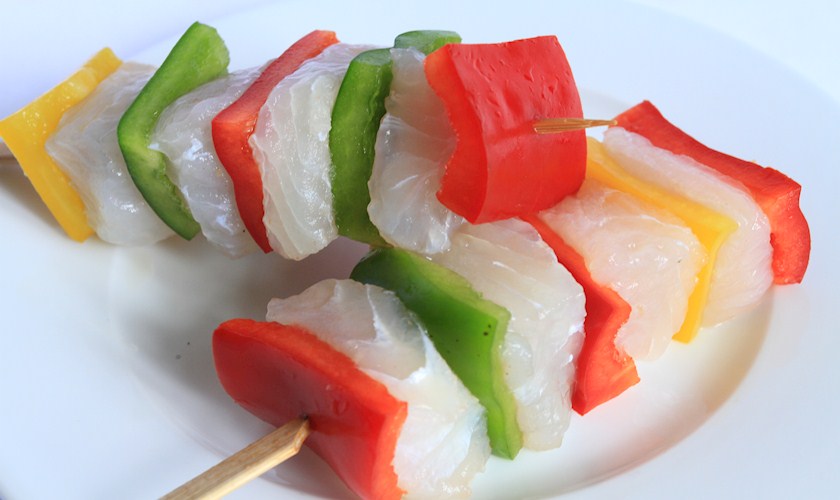(seafood.vasep.com.vn) With the expectation that the impact of the COVID-19 epidemic will slow down and with the support of Free Trade Agreements, analysts in Vietnam said that the main consumption channels of seafood will gradually become active again, creastin the growth momentum for this sector in 2021. It is forecasted that Vietnam's seafood export in 2021 will reach $8.8 billion, with an increase of 5% compared to 2020.
According to experts, in 2021, the recovery in consumption demand in export markets will support the growth momentum of seafood products. With the expectation that countries will have better control of the epidemic, seafood consumption will strongly recover with the return of restaurants and schools that take a large proportion in distribution channels. At the same time, seafood traders will increase imports again thanks to their need for inventory in the second half of 2020 and in 2021.
It is forecasted that Vietnam will continue to increase shrimp production in 2021, reaching about 730,000 tons, up by 4%. The stable supply of shrimp will be an advantage for Vietnamese shrimp exporters to continue increasing their share in markets.
 Experts also predict that, in 2021, the export price of shrimp will not increase sharply, since the demand still depends heavily on the recovery of main consuming channels. Competitive pressure will increase when global shrimp production is forecasted to rise again, so it’s nesessary to diversify export markets to reduce the risks of the major shrimp exportes around the world.
Experts also predict that, in 2021, the export price of shrimp will not increase sharply, since the demand still depends heavily on the recovery of main consuming channels. Competitive pressure will increase when global shrimp production is forecasted to rise again, so it’s nesessary to diversify export markets to reduce the risks of the major shrimp exportes around the world.
"Assuming that the epidemic situation in the world is persistent with the level gradually decreasing thanks to the wider distribution of the vaccine in 2021, the food service channels such as restaurants, hotels, resorts,… will gradually recover. Export shrimp prices of Vietnam in 2021 will increase slightly by 5%, averaging at 9.6 USD/kg.
In addition, shrimp exports to the EU market, which is accounting for 21% of the total value of Vietnamese shrimp exports, are expected to be actively supported by the Free Trade Agreement between Vietnam and the European Union (EVFTA), which has been put into effect since 1 August 2020. Then, import tax on frozen raw shrimp will immediately decrease to 0% when the Agreement comes into effect, while the tax for processed shrimp will be gradually reduced to 0% after 7 years of the Agreement's entry into force, specifically since January 1, 2027.
The tax rate of 0% for raw shrimp will significantly boost the competitive advantage of this product in the EU market. Meanwhile, in 2021, the tax rate for processed shrimp will still be 7% - equal to the preferential tax rate GSP is currently getting. Therefore, Vietnam's processed shrimp products have not yet gained advantages from EVFTA.
Besides the positive prospects, Vietnamese shrimp exporters will face risks if anti-dumping tax rates to the US market increases during the 14th administrative review period (POR14). However, analysts still expect Vietnamese shrimp products to continue receiving the 0% anti-dumping tax rate on the US market as demonstrated in the last review - POR 13.
For pangasius, the production in Vietnam is also forecasted to continue to increase, while the output and export prices depend heavily on the purchasing power of consumers in the main consumption channels. Experts expect pangasius exports to recover, thanks to the gradually larger demand after a period of close down of estaurants, hotels and resorts since the COVID-19 epidemic in main export markets such as China, the US, EU, ... are getting into control.
The advantages of lower selling price compared to substitute products and the efforts of Vietnamese pangasius businesses to increasingly focus on value-added processed products, fully meeting the conditions for food safety and hygiene, traceability will contribute to boosting the export value of Vietnamese pangasius by 2021.
The price of raw fish is not affordable enough for people to expand the farming area, making the supply of pangasius difficult to expand in 3 – 6 coming months. With the expectation that demand will gradually improve with supply not expanding in time (farmers usually take 3 - 6 months from stocking to harvest fish), pangasius export price is expected to be more positive in 2021 with a 10% increase.